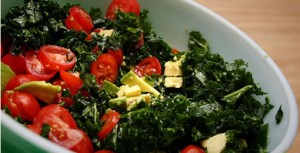The function of a healthy lymphatic system is to collect
excess fluid, proteins, fats, inorganics and organics from the tissues, filter
it and return it to the bloodstream. Through its capacity as a filter, it protects
our body against disease and illness.
With lymphedema, excess protein-rich fluid leaks from the
lymph causing swelling, which decreases the oxygenation of tissues and
interferes with normal cell function. If the lymph stagnates, there is
potential for infection to occur (since the lymph contains bacteria) and excess
protein which remains in the tissues can begin to align and cause fibrosis.
Nutritional considerations for lymphedema include the
following key factors:
CALCIUM
The healthy flow of lymph is dependent on the presence of free calcium for good peristaltic action of the smooth muscles. We have a tendency to look to milk as a good source of calcium (Ca), however milk contains too much protein to be an adequate supply of Ca. In fact, one of the key factors influencing Ca loss is high protein intake since protein creates an acidic environment in the body (the body constantly seeks to maintain blood pH at about 7.35). When the blood becomes too acidic it takes calcium from the bones and pulls it into the bloodstream where it acts to restore the proper balance.
Good food sources:
- Green vegetables – spinach, collard greens, swiss chard, kale, romaine lettuce,
celery, broccoli, cabbage, green beans, Brussels sprouts, asparagus - Citrus fruits
- Herbs – basil, cinnamon, rosemary, garlic, mustard seeds
- Nuts and seeds – steel cut oats, sesame seeds, almond
- Sea vegetables
PROTEIN
Lymphedema is associated with the accumulation of protein in
the interstitial spaces. At the same time, protein is essential for repairing
and replacing tissues and muscles and building hormones, chemical messengers
and antibodies (to name only a few roles) in your body. Your body requires
protein with every meal.
Consider:
- Choose healthy lean meat and fish protein – just one serving per day.
- Use nuts, seeds, and legumes as alternative protein sources. Add them to
salads, whole grains and steamed veggies for new taste options.
WATER
Water is an important component of lymph and is the
transport medium of the lymph system. It is very important to stay well
hydrated when dealing with lymphedema. Cutting back on fluid intake in an
effort to reduce the swelling can actually increase the swelling.
Consider:
- Here’s a good rule of thumb to determine proper hydration levels: Drink enough water to turn your urine
a light-coloured yellow – no odour and very little colour! - Avoid caffeine and alcohol which are mild diuretics. You can enjoy 1 to 2 cups
of green tea which is full of antioxidants and anti-inflammatory
compounds.
FATS
Since the lymph is also responsible for removing fats from the tissues and bloodstream, it is important to choose your fats wisely. Reduce the amount of saturated fat (from animal
protein), polyunsaturated fats and completely eliminate hydrogenated and trans fats from your diet (found in margarine and fried foods).
Choose good fats:
- All of the hype about omega-3 fatty acids is completely valid. You need these
essential oils for healthy cell membranes and brain health. They are found
in fish oils, flax oil, hemp oil, walnut oil. I supplement my fish intake
with EPA/DHA capsules, then use the nut and seed oils as dressing for
salads, and steamed vegetables. They cannot be heated without going
rancid. - For low heat cooking (less than 350 degrees F) you can use olive oil combined
with vegetable or chicken stock to keep it cool – for steaming vegetables
and light sautéing. For higher heat cooking used small amounts of coconut
oil or butter.
SODIUM
Excess salt intake can increase the swelling of lymphedema as well as cause other health issues within the
body. High intake of sodium can lead to dehydration and is linked to high blood
pressure and heart disease. At the same time, sodium is an important mineral
necessary for the regulation of blood pressure and fluid volume to name just a
few of its roles.
Consider:
- Consume no more than 1,500 milligrams of salt per day.
- Take the salt shaker off the table, instead flavour with herbs, spices, seaweed
and lemon juice - Limit the amount of processed foods you eat. When you do, read food labels
carefully to determine the amounts of sodium and learn to recognize
ingredients that contain sodium: a food with salt, soy sauce, salt brine,
or any ingredient with sodium, such as monosodium glutamate, or baking
soda (sodium bicarbonate). - In reading menus, look for words that signal a high sodium content, such as
barbecued, broth, marinated, pickled, smoked and tomato base. - Fresh vegetables and fruits are a good source of appropriate amounts of sodium.
BODY WEIGHT
Excess body mass creates more work for the lymphatic system,
further with excess weight can come limited mobility, which reduces the
movement of the lymph and leads to stagnation and more swelling.
Consider:
- Maintain a healthy, active body weight
- Eat a balanced, healthy diet. We strongly
recommend eating 6 to 9 cups of vegetables and fruits per day, one to two
servings of whole grains, and only one serving of animal protein per day –
make that fish two to three times each week. - Make exercise an important part of your everyday routine. Whether walking,
dancing, visiting the gym or enjoying fitness classes – find time to move
and sweat every day.
Herbal Salt Substitute Recipe
Source: https://www.tasteofhome.com/Recipes/Herbal-Salt-Substitute
1 tablespoon dried basil
1 tablespoon dried thyme
1 tablespoon ground coriander
2 teaspoons onion powder
2 teaspoons dried parsley flakes
2 teaspoons ground cumin
1 teaspoon garlic powder
1 teaspoon ground mustard
1 teaspoon cayenne pepper (I use less – my family finds this a little too picante!)
1 teaspoon paprika
In a small bowl, combine all ingredients. Store in an airtight container in a cool
dry place for up to 1 year. Yield: 1/2 cup.
I also use Dulse or Kelp flakes instead of salt – or add large pieces of seaweed (Nori) to cooking water of soups, stews, and to flavour
pasta and rice.
Thanks to the following resources:
https://www.nhlbi.nih.gov/hbp/prevent/sodium/tips.htm
https://lymphalexa.com/2011/03/08/nutrition-lymphedema/
The Encyclopedia of Healing Foods by Michael Murray, ND pp. 27-28
Lymphedema: Finding the Holistic Approach by Phillip J. Pollot, LMT
Incoming search terms:
- green tea lymphedema
- green tea and lymphedema
- green tea for lymphedema
- lymphedema green tea
- lymphedema and nutrition


